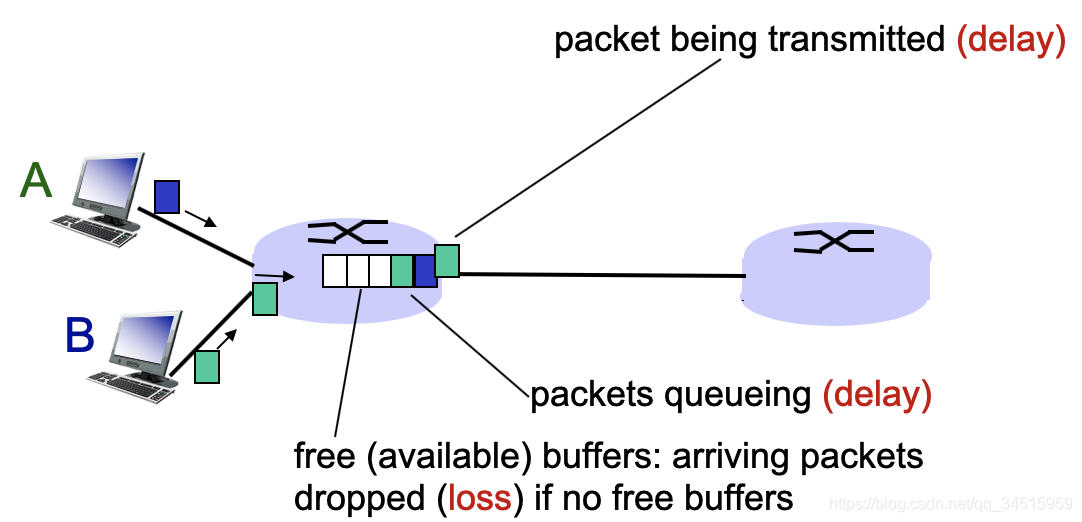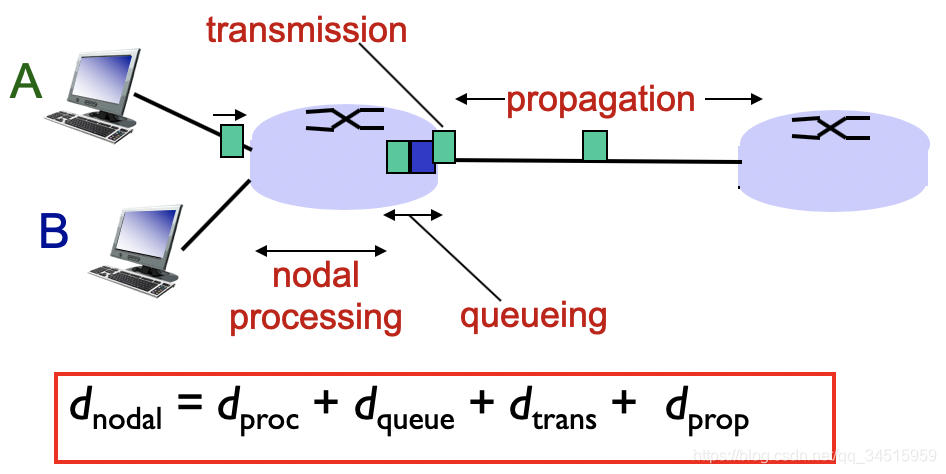How do delay and loss occur?
- Delay
– Data transmission and packets queuing in the devices(router and others) need time. - Loss
– Packet arrival rate to link(temporarily)exceeds output link capacity, thereby dropping some packets, which causes the data loss. Lost packet maybe retransmitted by previous node, by source end system, or not at all.

Four source of packet delay
- Processing delay
– When the data arrives in nodes, it need be checked if there are bit errors. It costs time, but usually it is less than msec. - Queuing delay
– Maybe, there is network congestion, and the data are waiting to be transmitted into output links.
– The average time could be from 0 to infinite, it depends on the network congestion. - Transmission delay
– Transmitting the data into to link needs time as well.
– D trans = L(packet lenght, bits) / R(link bandwith, bps) - Propogation delay
– The data is propogated over links needs time.
– D prop = D(lenght of physical link) / S(propagation speed in medium, around 2 x 10 ^ 8 m/sec)

Throughput
- Rate (bits/time unit) at which bits transferred between sender/receiver, we can look it from instantaneous and average views.
– Instantaneous: rate at given point in time.
– Average: Rate over longer pereiod of time. - The inconsistency between sender and receiver thoughput makes thoughput bottleneck.
References
Sildes of Computer Networking, A Top-Down Approach